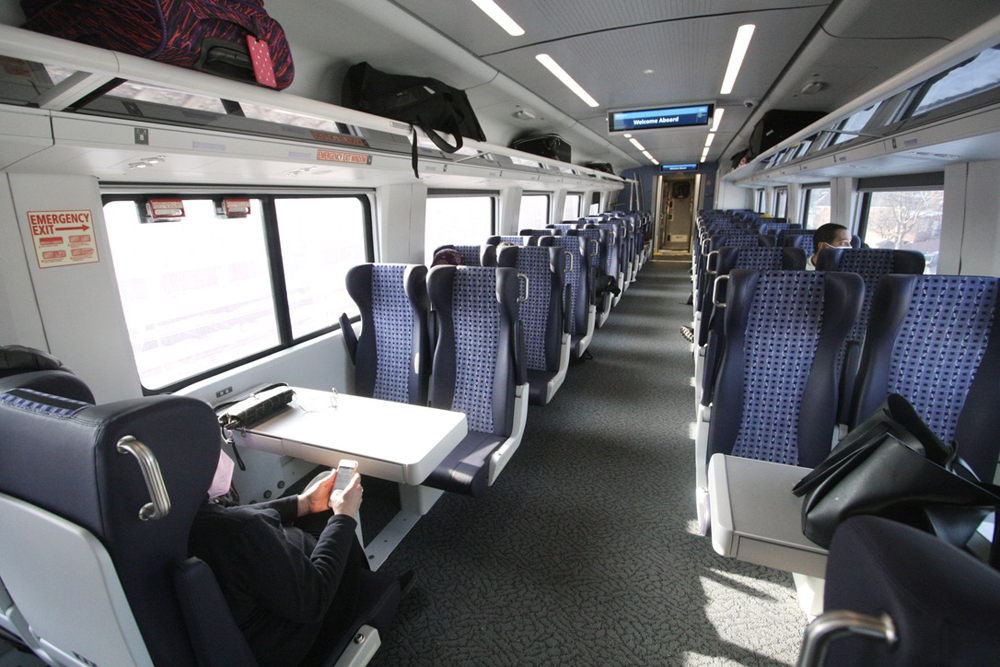
WASHINGTON — Coaches where half of the seats face backwards have been standard for years on Amtrak services ranging from many regional state-supported corridors to Acela First Class. Beginning March 2, that configuration is being extended to all Northeast Regional Amfleet-equipped trains. Acela Business Class will transition to permanent “fixed forward and backward” seating later this year, according to an Amtrak advisory. The new Acela and Aero trainsets will also feature fixed-direction seating.
A “Special Employee Advisory” obtained by Trains News Wire says the move will facilitate four additional New York-Washington Northeast Corridor weekday round trips as well as two on the weekend. Amtrak spokesman Jason Abrams says scheduling details will be announced next week. “The new frequencies are expected to serve between 25,000 to 30,000 riders per month and generate millions of dollars in incremental ticket revenue for the remainder of (fiscal year) 2024,” says the advisory.
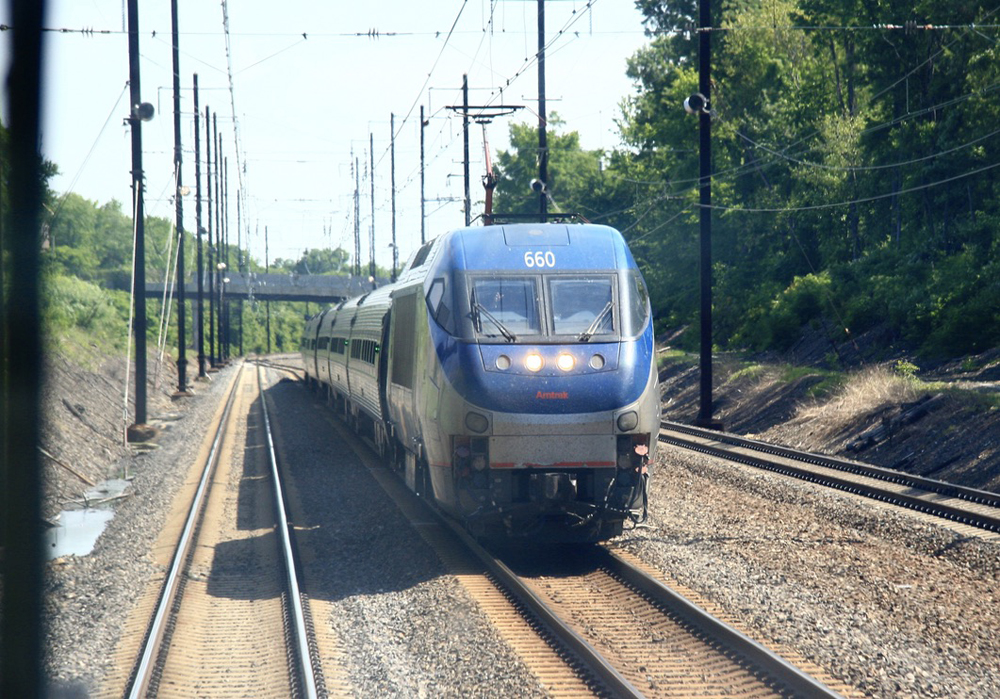
Abrams tells News Wire, “Converted HHP8Cs are part of the plan.” Some of these now-unpowered control units have been spotted testing during the last few months on the Keystone Corridor. The notably unreliable electric locomotives were delivered concurrently with Acela trainsets but sidelined with the arrival of the ACS64 fleet.
Fixed seating “will allow us to operate a number of these trains as push-pull with platform turns, without rotating seats so that all seats face forward as they do today,” according to the internal advisory. Equipment reversing in this manor can be turned in about an hour, “down from about 2.5 to 3 hours required to wye the trains.” Fewer deadheading yard moves will thus be needed.
The Vermonter, Carolinian, New York’s Empire Service and all Virginia trains are being converted, but the Pennsylvanian and Palmetto will continue to have all forward-facing seats. Trains operating with a half-business club/dinette will still have business-class seats always facing forward. Business-class conversion is to be implemented March 4.
The “How you can help” portion of the Amtrak employee message urges workers to “consider sitting in the backward-facing seats. While our research indicates the majority of customers are comfortable sitting in either direction, a small group of customers has a strong preference to having a forward-facing seat.”
The public advisory on the new seating arrangement says conductors can help find any available forward-facing seats, but notes “forward-facing seats are available on a first-come basis and are not guaranteed.” Business-class customers’ seat selection is to include fixed forward options, but seat assignments can also be changed after purchase on the Amtrak app or the Amtrak website.






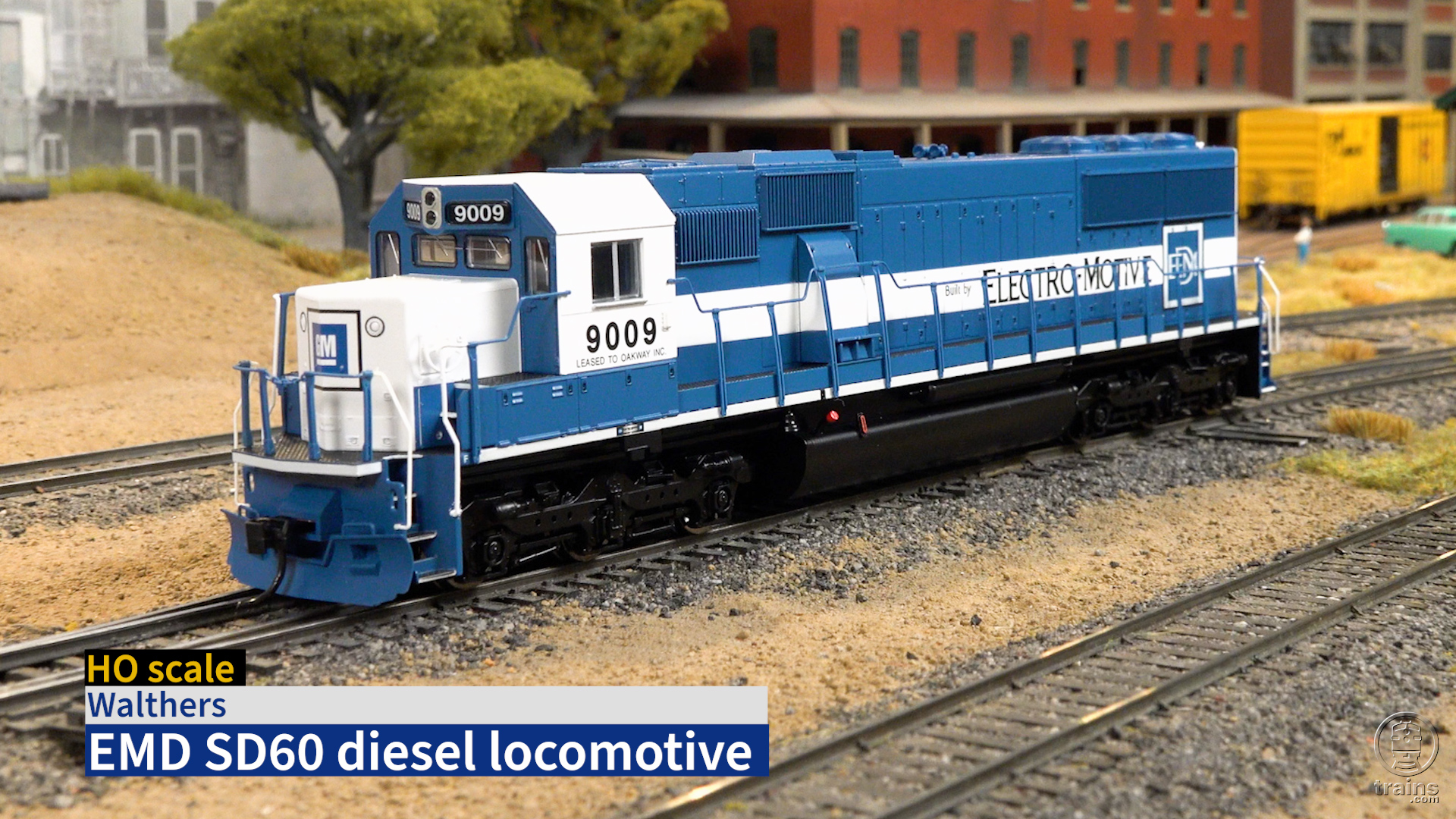
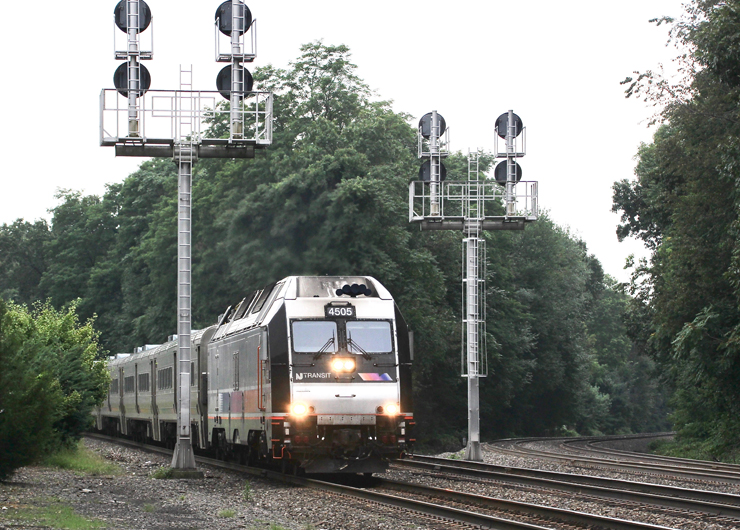
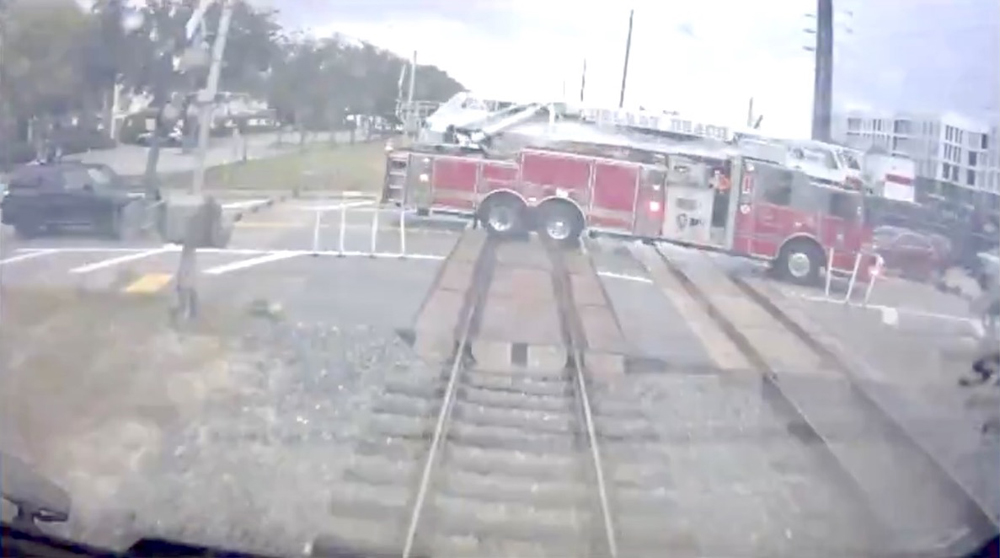
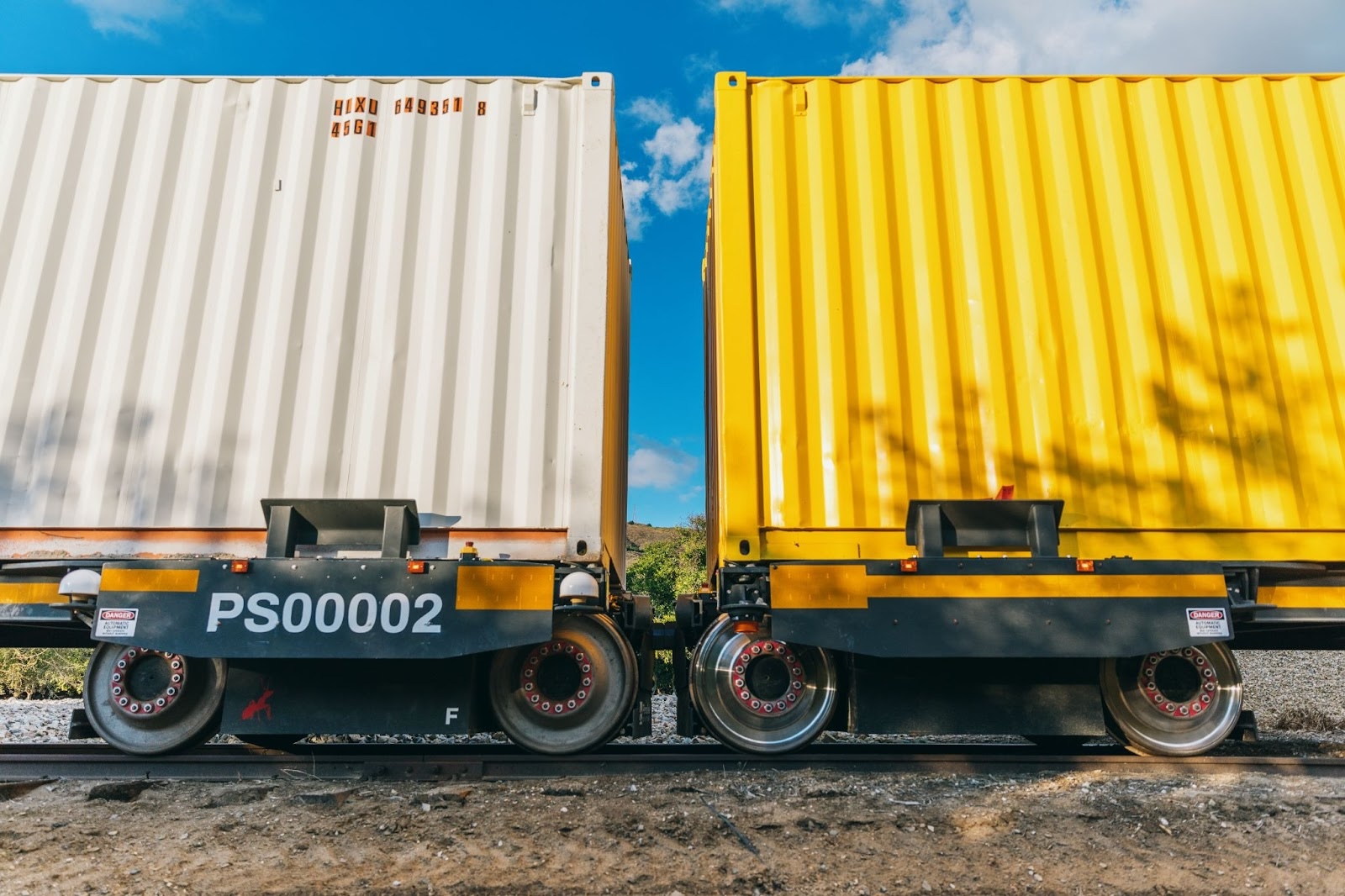




That pathetic Amtrak shill, RPA’s President James Mathews, gushed about this initiative in last Friday’s Hotline News. Whatever the merits or demerits of fixed seating the only T additional train frequencies it will create are in Stephen Gardner’s and Anthony Coscia’s playpen, the NEC. And only on the NY-Washington end. That’s not where Amtrak needs to add more trains if it wants to stay relevant as a national carrier.
I suspect Mathews and his top officers know in their hearts that Gardner and Coscia don’t want the Amtrak they want. But they dare not confront them. RPA and its state affiliates are surrounded by the passenger rail naysayers in the U.S. House and Senate and at the right wing think tanks like the Cato Institute and the Heritage Foundation. They have nowhere else to turn. No matter how much Gardner and Coscia undermine the operation of the LDs while at the same time claiming they are making them better, Mathews and his merry band have to keep smiling.
What I find interesting is at BOS, NYP , and WAS the trains have to use the loop track for the Car Wash.
So the trains are facing the forward direction regardless.
In Japan they can rotate all the seats in a railway coach by the press of a button by one employee at the end of the car, can be done in like the quarter of and hour that they clean a train before its next return trip, so, uh, why not America?
P.S. Using a manual petal, passengers as well can rotate the seats to face the direction they wish.
Don’t be surprised if they remove or disable the pedals.
I really don’t care whether I sit forward or backward but I don’t like losing my
” private space” when everyone in the coach is facing in the same direction. I am uncomfortable when I am playing “toesie” and staring at people I don’t know.
Backwards facing seats. That’s a sure way to discourage patronage. It’s beginning to be that the only comfortable way to travel is to drive.
What does this mean for cleaning the trains at the reversing stations? Amtrak is no JAL that turns and cleans its trains quickly.
Fixed rearward facing seats.
Narrower seat widths.
Less padded seats.
Less reclining seats.
No seats in food service cars.
These sadly add up to me choosing cheaper and faster air travel. Amtrak has lost it’s appeal to me.
I’m with the “small” group of customers with a strong preference to face forward. Note how the word “strong” is added to the sentence. Will the modified Amfleet cars have tables between the opposite-facing seats, thus lowering the car capacity, or will we stare unobstructed at our backwards seatmates? I understand the reason for doing this, but is is just one more degradation of the “passenger experience.”
I’m with the larger group that doesn’t mind riding backwards. But I won’t argue with George Pins (above). He’s far from alone in his preference to face forward. That’s why in generations past, short-haul trains had “walkover seats” — labor-intensive for the train crew, mechanically complex, and not all that comfortable.
Pretty much 50% of seats in Europe face to the rear at any given time. It is 50% on America’s commuter trains and trains like the Hiawatha that don’t turn.
I’m really dating myself as I remember airplanes with small numbers of backward-facing seats. The safety card showed two different “brace” positions for emergencies, depending on which way you were facing.
You are not dating yourself that much Charles, I remember flying Southwest with their “family” seating options not that long ago. “Not that long ago” likely being 20 years, but hey, it’s all relative. Like George I prefer forward facing for longer distance, track speed trips. Commuter runs and tourist railroads don’t bother me, but a few years back I ended up facing backwards on an HST between York and Edinburgh (power unit failure) and it took much of the afternoon to shake the queasy feeling.
PETER — You brought up a point I’d contemplated including in my original post (above) — that facing backwards is okay on a short haul, but a longer haul probably not. Contemplate this: the Hiawatha is not turned, but Amtrak LDs are.